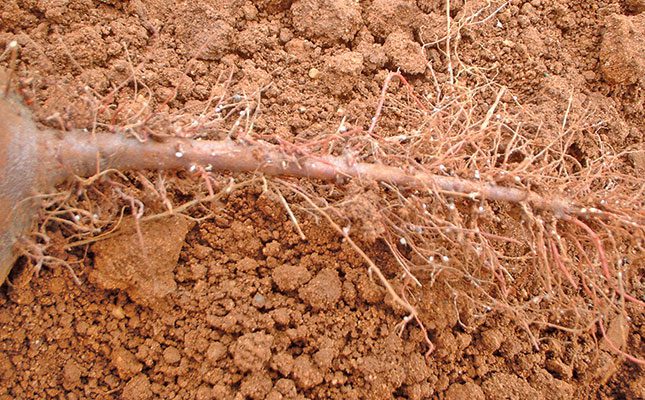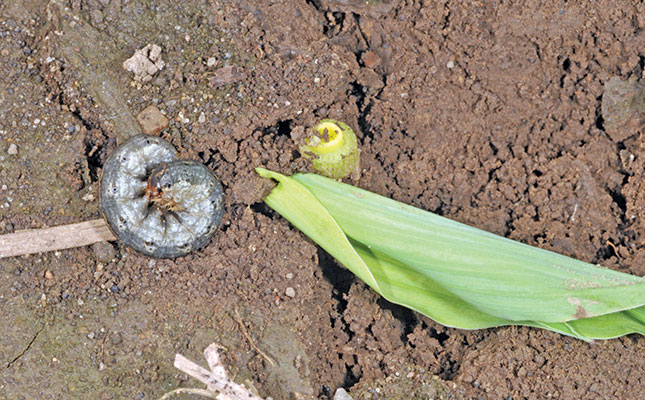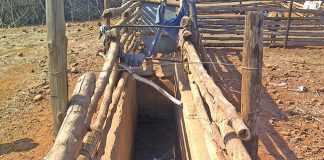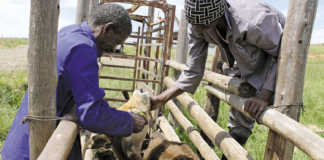
Photo: Bill Kerr
Direct seeding Swiss chard offers a farmer a number of significant advantages: the seed itself is relatively cheap, you save on the cost of seedlings, and you can use the excess plants obtained after thinning to transpant elsewhere.
If you want to do any transplanting, allow the plants to get big enough (approximately 12cm tall) to handle the process. Trim the leaves with a pair of scissors before planting to obtain a balance between the root system and the foliage.
Each ‘seed’ is classed as a fruit that contains a few seeds, so thinning is usually required.
There are three main disadvantages of direct seeding: more labour is required for thinning and replanting, the crop occupies the land for longer before harvesting, and weed control is more difficult.
Beet cyst eelworm
Many vegetable farmers have beet cyst eelworm (Heterodera schachtii) in their lands. If this is the case with you, don’t even consider direct seeding, as it allows the eelworm to go through more breeding cycles. Use seedlings only.
Farmers who have this eelworm usually carry out crop rotation and use appropriate chemicals to reduce the pest, but once in the soil it will always be present to some degree.
For the most part, using seedlings is the safer option on all counts and helps you to avoid many risks. Moreover, seedlings enable you to harvest a crop a full month earlier than with direct seeding.
Whether using direct seeding or seedlings, it is best to soak the seed overnight, then drain and keep it damp for a couple of days before drying it enough to plant.
Planting
Space the plants 15cm to 20cm apart in the row, and with an inter-row distance of about 40cm. To give the seedlings a good start, irrigate them with a closed handful of LAN in 8ℓ to 10ℓ of water before transplanting. This will water about 2 000 seedlings. Ensure that the seedlings are well irrigated before planting.
Fertilisation
After irrigating, apply a top dressing when the leaves start to become paler. This will almost always start in patches, so watch out for it. Being very leafy, Swiss chard is a nitrogen-loving crop.
The first top dressing will depend on the organic content of the soil, the pre-planting fertiliser, and any leaching that may take place due to rain or excess irrigation.
Swiss chard has the advantage of being rather sodium-tolerant. It’s also not fussy about soil type and will even grow well in clay soils.
Eelworm is a threat in sandy soils. Swiss chard is highly susceptible to cyst eelworm as well as root knot eelworm (Meloidogyne spp).
Swiss chard can be productive for fairly long, so you need to start off with a low eelworm count in the soil. Fumigation and/or post-planting chemicals can be used.
Bill Kerr is a vegetable specialist and breeder.










